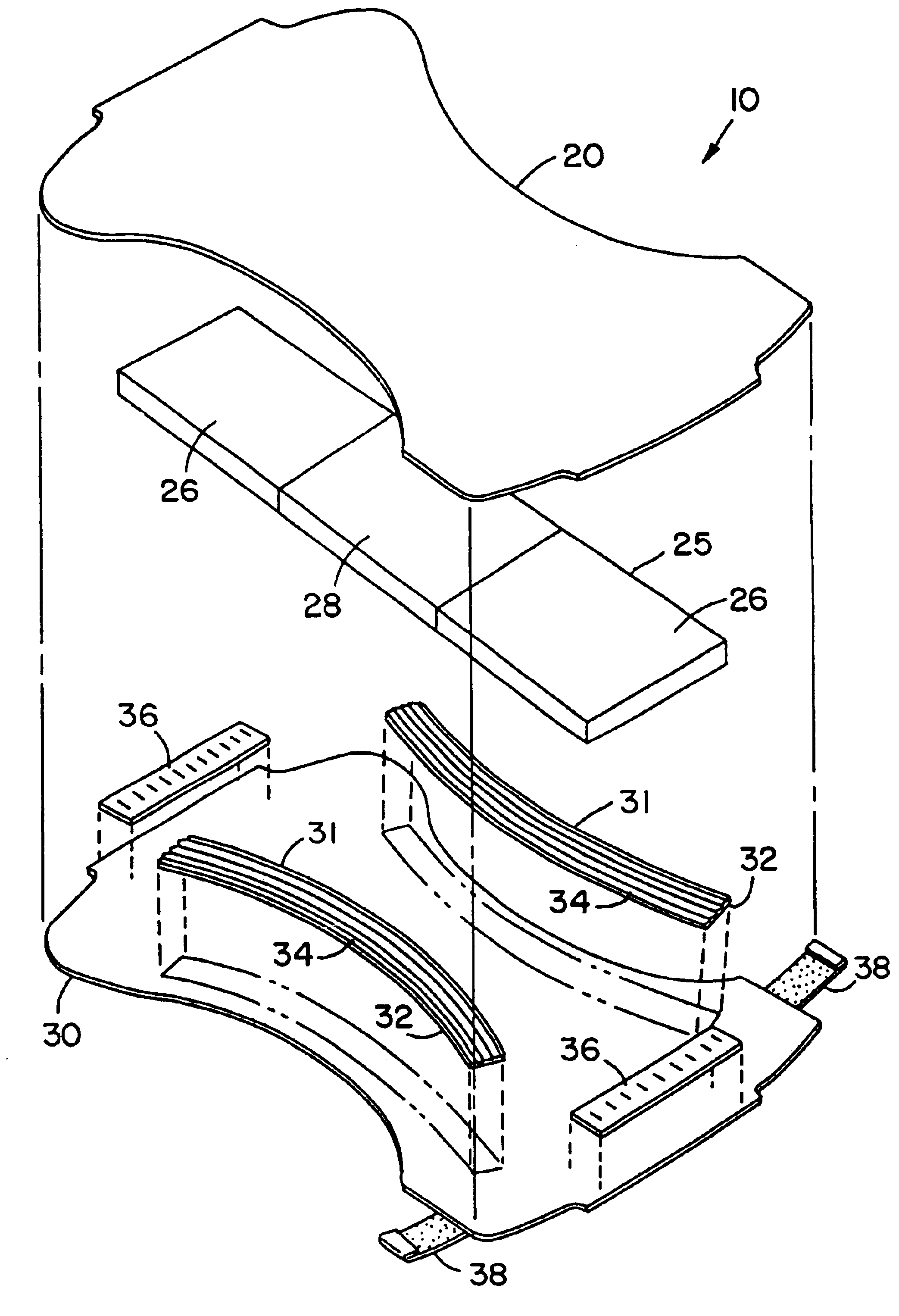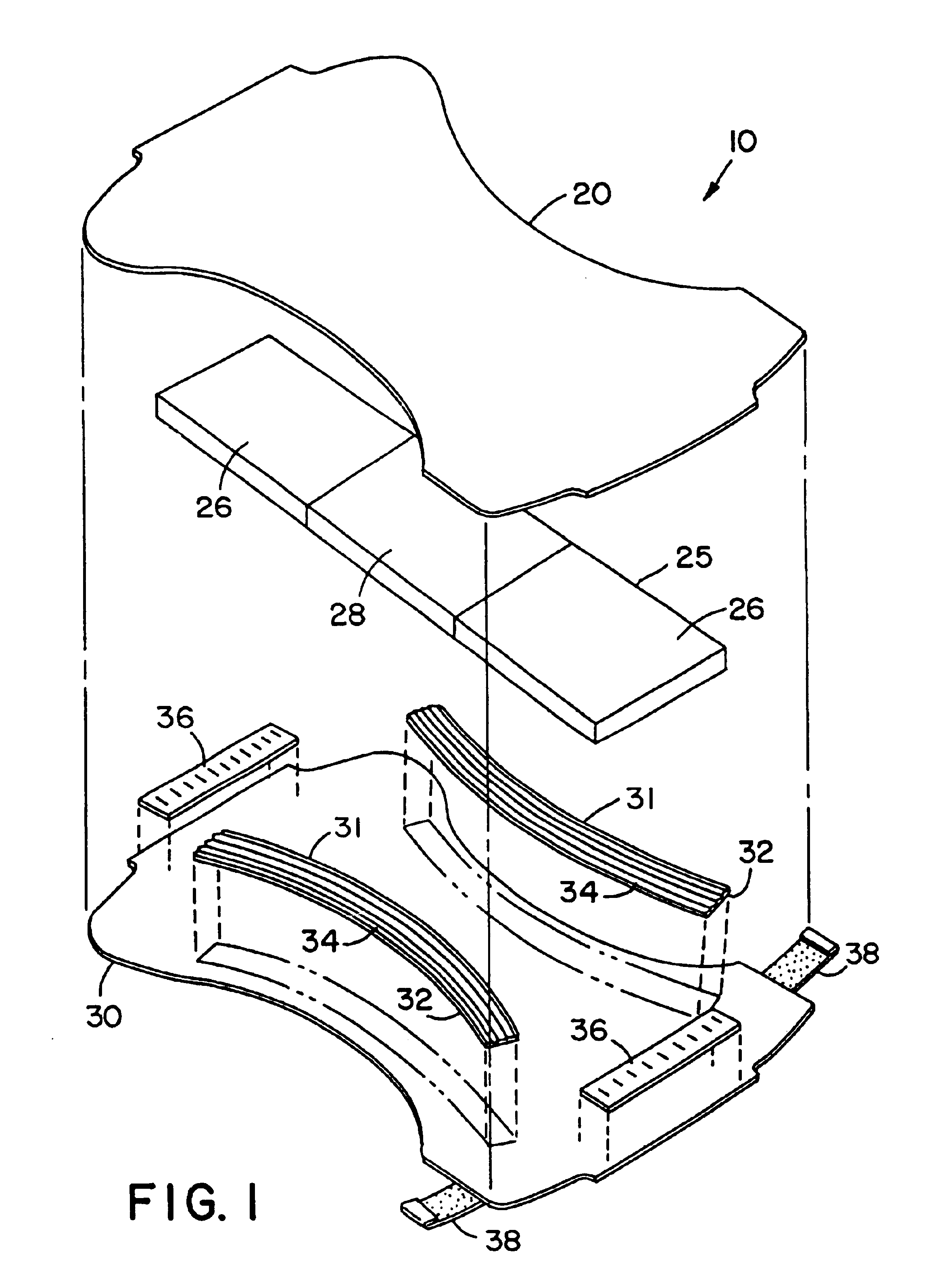Cellulose fibers treated with acidic odor control agents
- Summary
- Abstract
- Description
- Claims
- Application Information
AI Technical Summary
Benefits of technology
Problems solved by technology
Method used
Image
Examples
example 1
(Control)
100 grams of CR1654 cellulose fibers from the Bowater Co. Coosa mill at Coosa, Ala., was mixed with 1000 ml of water at room temperature for one hour, using a Hobart mixer. Then, the slurry was partially dewatered to a fiber consistency of 30%.
10 grams of anhydrous citric acid from the Aldrich Co. in Milwaukee, Wis. was separately added to 200 ml of water in a beaker. The mixture was stirred until the citric acid crystals were dissolved.
The citric acid solution was added to the cellulose fiber slurry while stirring in the Hobart mixer. The slurry mixture was blended at ambient temperature for 1.5 hours. The slurry mixture was then removed from the Hobart mixer, and heated in a convection oven at 50° C. for 6 hours, then at 95° C. until all of the fibers were dried.
The treated dry cellulose fibers were then fiberized in a Pallman fiberizer, to form individual treated cellulose fibers. The treated cellulose fibers were tested for ammonia absorption and antimicrobiological act...
example 2
100 grams of the same cellulose fibers used in Example 1, was mixed with 1000 ml of water at room temperature for one hour, using a Hobart mixer. The slurry was partially dewatered to a fiber consistency of 30%. 10 grams of the same anhydrous citric acid was separately added to 200 ml of water in a beaker. The mixture was stirred until the citric acid dissolved.
7.6 grams of zinc carbonate hydroxide (5ZnO.2CO3.4H2O, FW=598.87 Reagent Grade, from AESAR Co. in Ward Hill, Mass.) was added slowly with stirring to the citric acid solution. Then, the aqueous citric acid / zinc carbonate hydroxide mixture was added to the cellulose fiber slurry while stirring in the Hobart mixer. The slurry mixture was then blended at ambient temperature for 1.5 hours at a low agitator speed. The slurry mixture was then removed from the Hobart mixer, and heated in a convection oven at 50° C. for 6 hours, then at 95° C. until dry.
The treated dry cellulose fibers were fiberized in a Pallman fiberizer, to form a...
example 3
100 grams of the same cellulose fibers used in Example 1, was mixed with 1000 ml of water at room temperature for one hour, using a Hobart mixer. The slurry was partially dewatered to a fiber consistency of 30%. 10 grams of the same anhydrous citric acid used in Example 1, and 0.5 grams of polymaleic acid (available from Polysciences, Inc.) were added to 200 ml of water in a beaker. The beaker was stirred until all of the crystals were dissolved. 4.1 grams of zinc oxide (available from Aldrich Co.) was then added slowly with stirring to the water / citric acid / polymaleic acid solution.
The aqueous citric acid / polymaleic acid / zinc oxide mixture was added slowly with stirring to the wet fiber pieces in the Hobart mixer. The resulting mixture was then blended at ambient temperature for 1.5 hours in the Hobart mixer, at a low agitating speed. The resulting mixture was then removed from the Hobart mixer, and heated in a convection oven at 50° C. for 6 hours, then at 95° C. until dry.
The tre...
PUM
| Property | Measurement | Unit |
|---|---|---|
| Fraction | aaaaa | aaaaa |
| Fraction | aaaaa | aaaaa |
| Fraction | aaaaa | aaaaa |
Abstract
Description
Claims
Application Information
 Login to View More
Login to View More - R&D
- Intellectual Property
- Life Sciences
- Materials
- Tech Scout
- Unparalleled Data Quality
- Higher Quality Content
- 60% Fewer Hallucinations
Browse by: Latest US Patents, China's latest patents, Technical Efficacy Thesaurus, Application Domain, Technology Topic, Popular Technical Reports.
© 2025 PatSnap. All rights reserved.Legal|Privacy policy|Modern Slavery Act Transparency Statement|Sitemap|About US| Contact US: help@patsnap.com



